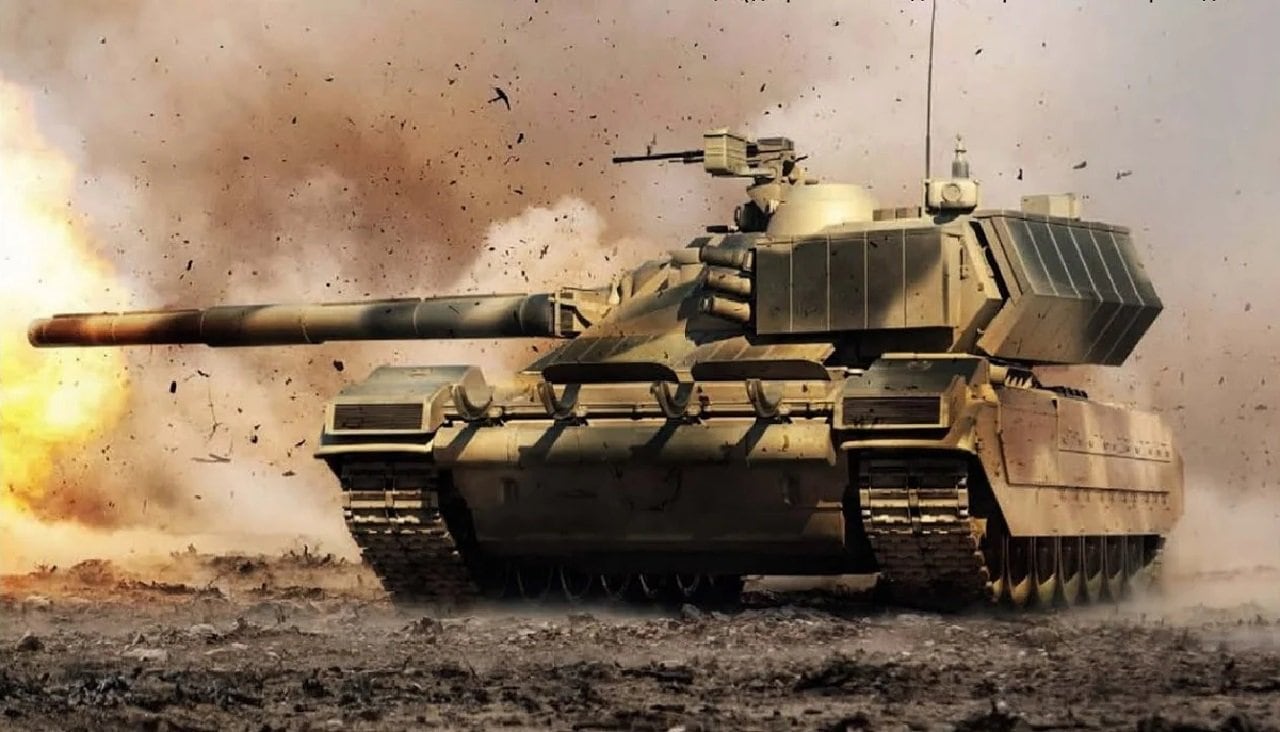T-95 – the Super Tank Russia Never Built:
Throughout the 1990s, Russia was plagued by a lingering financial crisis as the country transitioned from communism to a free market economy.
As a result, Russia’s military suffered greatly and a number of programs were either scaled back considerably or eventually canceled outright. This was most notable following the 1998 currency collapse, which took Moscow more than a decade to recover from.
One of those that was delayed and subsequently canceled was Object 194, which was focused on producing a Russian fourth-generation main battle tank (MBT). Work had actually begun at Uralvagonzavod in 1988, but following the dissolution of the Soviet Union in late 1991, work was abruptly halted.
However, the efforts were renewed after the Russian military inherited most of the Soviet’s inventory of tanks – including the T-80 MBTs that were produced by the Omsktransmash plant; and the T-72 tanks that were built by Uralvagonzavod. The latter facility also produced the T-90, which even at the time was largely seen as a stopgap while a more modern tank could be produced.
Meet the T-95
Though the tank being developed was never officially designed the T-95, the moniker seemed to have stuck after the first reports about the program surfaced that year. In fact, it wasn’t officially acknowledged by the Russian military until 2000. Details are sparse on the design, but sources suggest it was to be larger than previous Soviet-designed MBTs, and perhaps similar in dimensions and even weight to western-made tanks including the British Challenger 2, German Leopard 2A7, and American M1A2 Abrams.
The goal of the T-95 program was to create the next-generation MBT, and as such, it had little in common with the T-90 or older Soviet designs. It was instead focused on heavier armor and crew survivability. It would have been equipped with reactive armor, but notably a more powerful armament, including a 152mm main gun that could fire conventional rounds as well as guided missiles, while also offering greater protection for the three-man crew, which included a commander, gunner, and driver. Part of the concept included an unmanned, remote-controlled turret which included an autoloader for the main gun.
Additionally, the tank featured a panoramic periscope with a thermal imager, which would have enabled the commander to scan for targets and then delegate the aiming and firing to the gunner.
Despite the promise the program showed – it was canceled in April 2010 along with other military projects. Instead, the Russian military opted to modernize its T-90. The reason was later cited that the program was decades in development and some of its hardware was already on the verge of being obsolete.
Yet, what was seen as a step forward was reconsidered with the T-14 Armata. It could be argued that Object 194 was essentially a test bed for the Armata.

Russia T-14 Armata Tank. Image Credit: YouTube Screenshot.
Of course, while the T-14 does show promise, Moscow has thus far been unable to mass produce the tank in numbers.
It is a step above the vaporware of the T-95 but it is hardly a true proof of concept at this point.
A Senior Editor for 19FortyFive, Peter Suciu is a Michigan-based writer. He has contributed to more than four dozen magazines, newspapers, and websites with over 3,000 published pieces over a twenty-year career in journalism. He regularly writes about military hardware, firearms history, cybersecurity, and international affairs. Peter is also a Contributing Writer for Forbes. You can follow him on Twitter: @PeterSuciu.
From 19FortyFive

